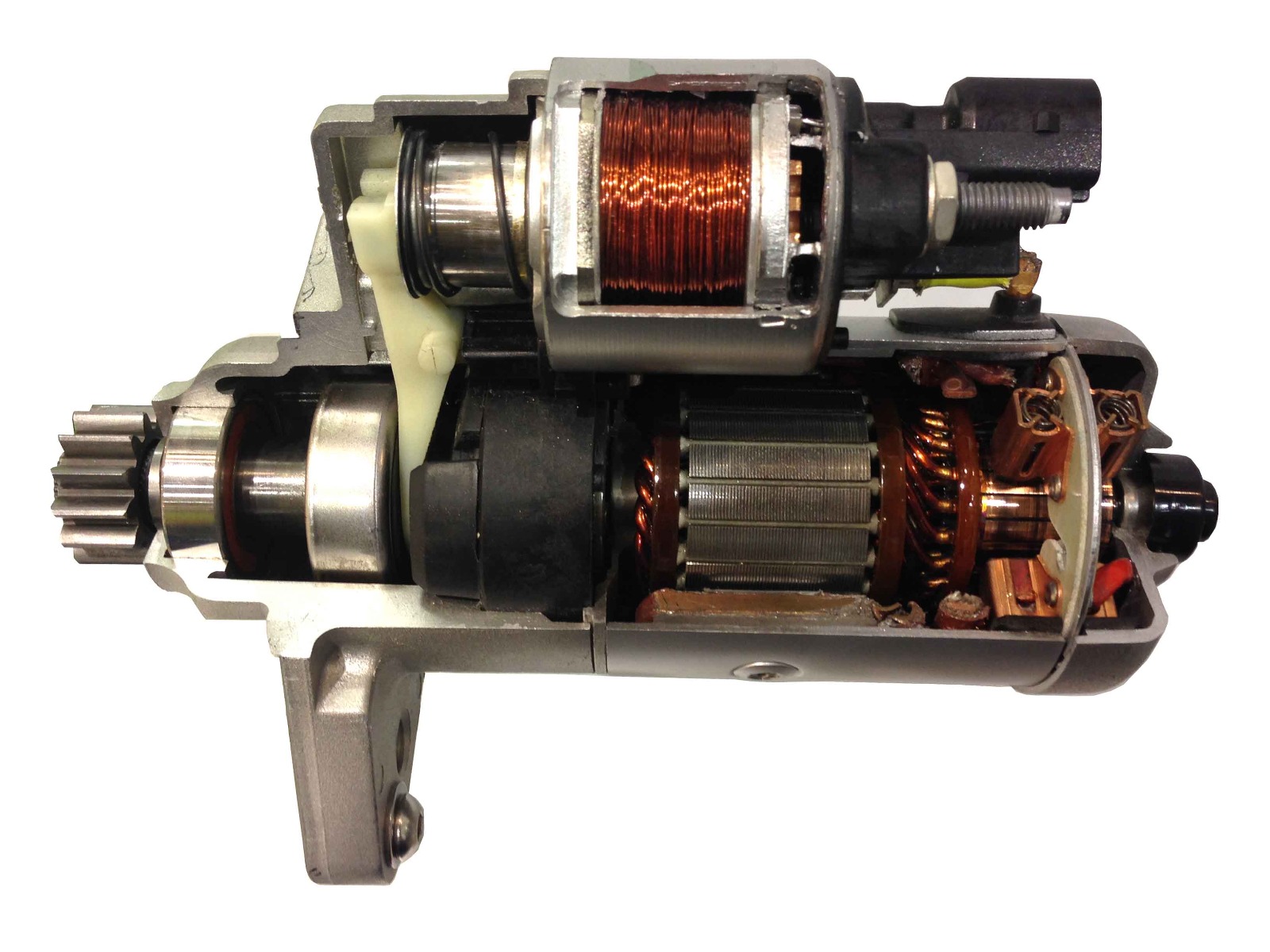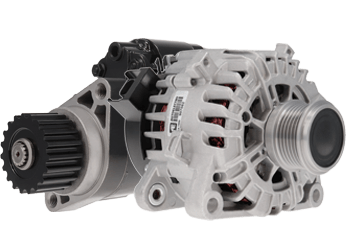Starter Motors
Starter Motor – How It Works

When you turn the key in your car’s ignition, the engine turns over and then cranks. However, getting it to crank is actually much more involved than you might think. It requires a flow of air into the engine, which can only be achieved by creating suction (the engine does this when it turns over). If your engine isn’t turning over, there’s no air. No air means that fuel can’t combust. The starter motor is responsible for turning the engine over during ignition and allowing everything else to happen. When you turn the ignition on, the starter motor engages and turns the engine over allowing it to suck in air. On the engine, a flywheel, with a ring gear attached around the edge, is fitted to the end of the crankshaft. On the starter, the pinion is designed to fit into the grooves of the ring gear. When you turn the ignition switch, the electromagnet inside the body engages & pushes out a rod to which the pinion is attached. The pinion meets the flywheel and the starter motor turns. This spins the engine over, sucking in air (as well as fuel). As the engine turns over, the starter motor disengages, and the electromagnet stops. The rod retracts into the starter motor once more, taking the pinion out of contact with the flywheel and preventing potential damage.
Starter Motor components & their functions:
Armature
The armature is an electromagnet, mounted on the drive shaft and bearings for support. It is a laminated soft iron core which is wrapped with numerous conductors loops or windings.
Commutator
The commutator is a section of the shaft at the rear of the housing on which the brushes run to conduct electricity. The commutator is made up of two plates attached to the axle of the armature. These plates provide the two connections for the coil of the electromagnet.
Brushes
The brushes run on a section of the commutator at the rear of the housing, making contact with the contacts of the commutator and conducting electricity.

Solenoid
The solenoid contains of two coils of wire that are wrapped around a moveable core. The solenoid acts as a switch to close the electrical connection and connects the starter motor to the vehicle's battery.
Plunger
The plunger works by using the connected vehicle battery and the solenoid to push the plunger forward, which engages the pinion.
Lever Fork
The lever fork is connected to the plunger so when the plunger is pushed forwards, so is the lever fork. This process then activates the pinion.
Pinion
The pinion is a unique combination of a gear and springs. Once the starter is engaged the gear is extended into the gearbox housing and is engaged with the flywheel. This spins the engine to begin the combustion process.
Field Coils
The housing holds the starter fields in the housing with screws. This can consist of two to four field coils connected in series. Energised by the battery this converts the coils into an electromagnet which then turns the armature. When the armature coils are powered a magnetic field is created around the armature.







